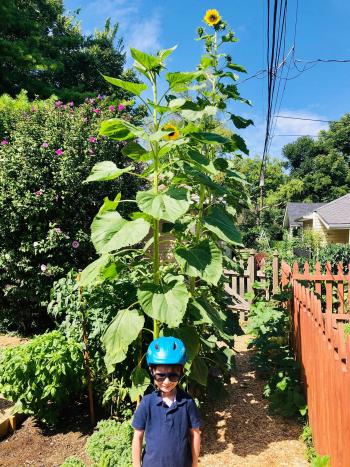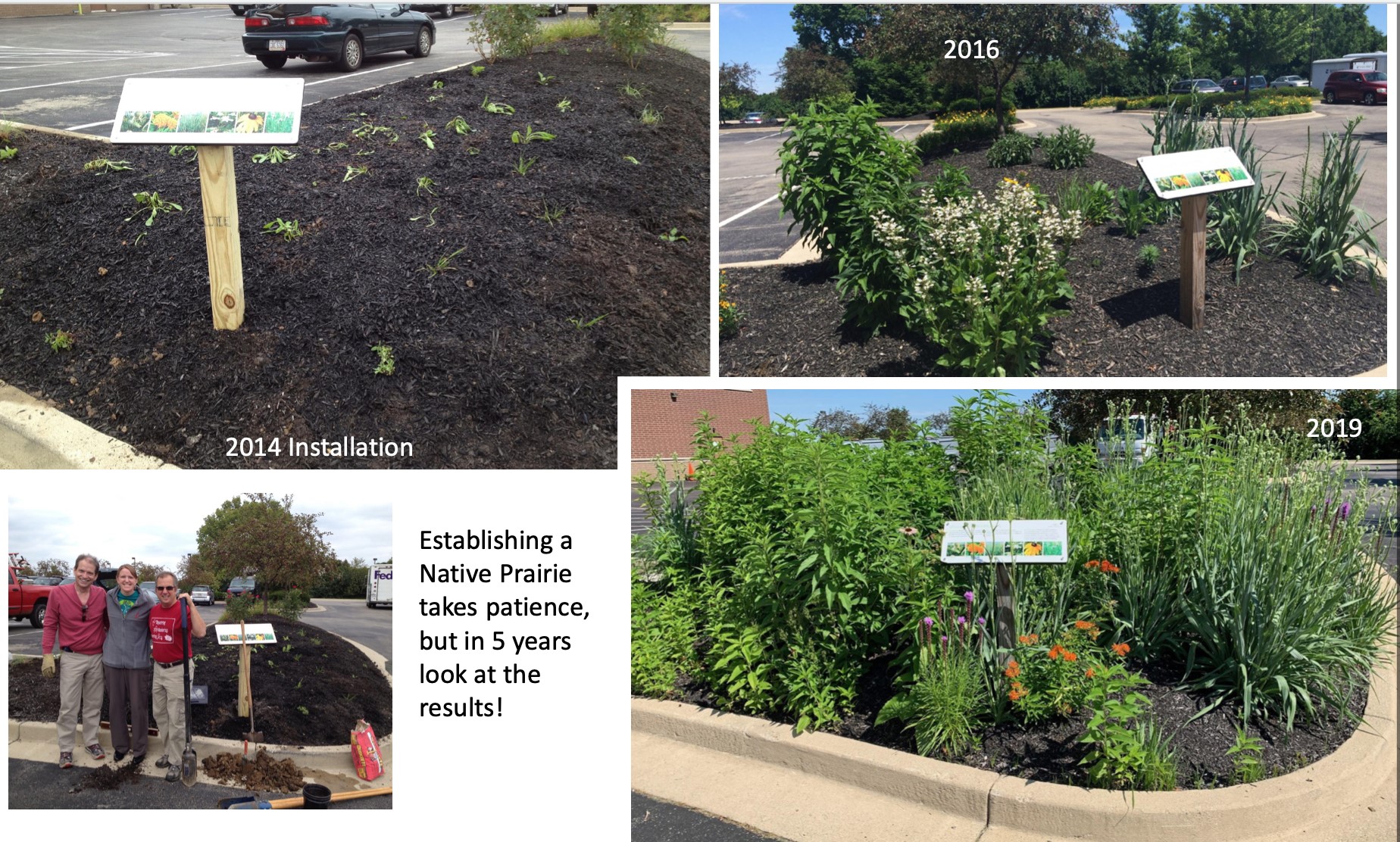During the April 2021 Community Read, Wright Memorial Public Library has invited the community to read and discuss “Nature’s Best Hope: A New Approach to Conservation That Begins in Your Yard” by Douglas Tallamy.
As part of the Community Read, the library sought examples from Oakwood residents who are already embracing the central premise of Tallamy’s book: that homeowners everywhere can turn their yards into conservation corridors that provide wildlife habitats.
Here are some of those stories.
“The future of sustainability is in everyday yards.”
 Michelle Abernathy began gardening when she moved to Oakwood in 2014. In her first yard in east Oakwood, she maintained a beautiful yard complete with registered Monarch Way Station and a labyrinth full of herbal and medicinal plants. Now living elsewhere in Oakwood with a larger yard, she and her family are in the process of converting into an ecologically sustainable micro-farm: manipulating water drainage from downspouts to use their water well; planting native bushes, grasses, flowers, and trees, a mini-orchard, plants for pollinators and predator bugs. The list goes on.
Michelle Abernathy began gardening when she moved to Oakwood in 2014. In her first yard in east Oakwood, she maintained a beautiful yard complete with registered Monarch Way Station and a labyrinth full of herbal and medicinal plants. Now living elsewhere in Oakwood with a larger yard, she and her family are in the process of converting into an ecologically sustainable micro-farm: manipulating water drainage from downspouts to use their water well; planting native bushes, grasses, flowers, and trees, a mini-orchard, plants for pollinators and predator bugs. The list goes on.
“I truly believe the future health of our planet and our children depend on this,” she said. “The future of sustainability is everyday people in everyday yards, whether .06 acres in East Oakwood or 3 acres in West Oakwood, using their land well.”
Abernathy started the Facebook group Oakwood Homesteaders to connect with others who have similar interests. It is one of two sustainability-focused, Oakwood-centric Facebook groups. Both groups have connected local residents to share information, support, and advice.
In recent months, Green Oakwood has seen an uptick in member interest in earth-friendly gardening practices.Nature-loving Oakwood residents regularly post and comment in the Green Oakwood Facebook group on the planting of native trees and flowers, removal of encroaching non-natives and reduction of harmful chemicals.
“This week alone we have seen posts and supporting comments on organic gardening, wildlife conservation, reducing indiscriminate chemical mosquito repellents and herbicides, and advice on how to prevent the collapse of our beautifully diverse ecosystems. It seems many more residents of Oakwood are looking at ways our wonderful city can become kinder to the environment, beautify our landscapes and live in harmony with our flora and fauna,” said group co-leader Cheryl Lloyd.
A backyard garden
At their home on Orchard Drive, Scott and Megan Forney have turned their small backyard into a garden with raised beds for vegetables, growing tomatoes, peppers, squash, herbs, blueberries, and more.
“I believe in growing heirloom vegetables to preserve the genetic diversity of our food,” said Scott Forney. “I save seeds so plants can adapt to our local growing environment.”
He’s working to grow more native plants, adding coneflower, goldenrod, milkweed and Virginia bluebells. In the front yard, you’ll find mason bee houses and a small bird house. The Forneys also try to provide pollen and nectar for pollinators with plants that bees, wasps, and butterflies like. The Forneys have compost piles, a worm bin, and a Bokashi bucket to process waste material.
“Everything from cardboard boxes, food scraps and yard trimmings goes in,” he said.
Forney, a teacher at Harman Elementary, helps share ecological knowledge with students, a practice happening across the Oakwood City Schools in various ways. At Harman, he works with the Green Thumbs Club, which helps students learn where their food comes from. The Oakwood Historical Society, which has maintained a garden for 11 years, also has programs for children. After a two year hiatus, its programs will return this summer.
Wright Library is also working on plans for native plants on its grounds.
 Corporate Native Landscapes
Corporate Native Landscapes
In Nature’s Best Hope, Tallamy writes about corporate and community landscaping as well as residential. Oakwood resident Nadja Turek joined forces with coworkers at Woolpert in 2014 to native, low-maintenance, no-chemical, bee-and-butterfly-friendly plants on a patch of land on its corporate campus. She offers a piece of advice: be patient. Native plants take several years to establish. The Woolpert marketing department made a sign for the garden to let people know that a wildflower garden was in progress.
It’s well worth the wait, Turek believes.
“Once the plants are established you get a riot of color, height and texture that we - and bees and butterflies – enjoy by the back entrance to our building,” she said.
Crowe Family: "It benefits Us all to take care of our home, the Earth."
When Laurel Crowe moved to Dayton in 2011, she began training and volunteering with Five Rivers MetroParks, learning about composting and gardening and helping the parks eradicate honeysuckle, plant new prairies, and build trails. This interest carried on into her own yard.
She and her husband stopped pulling dandelions in our yard; added a compost bin; a rain barrel; and planted vegetables and native flowers. They enrich their soil with leaf and manure compost to avoid chemicals and toxins.
“It benefits us all to take care of our home, the Earth,” she said. “I find so much joy in planting flowers and veggies with my family, watching our gardens grow, witnessing bees and butterflies thrive, and knowing that my small efforts do make a difference in helping the environment, as well as creating beauty around our home.”
